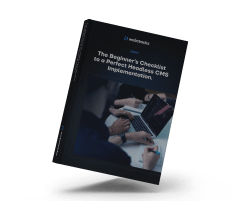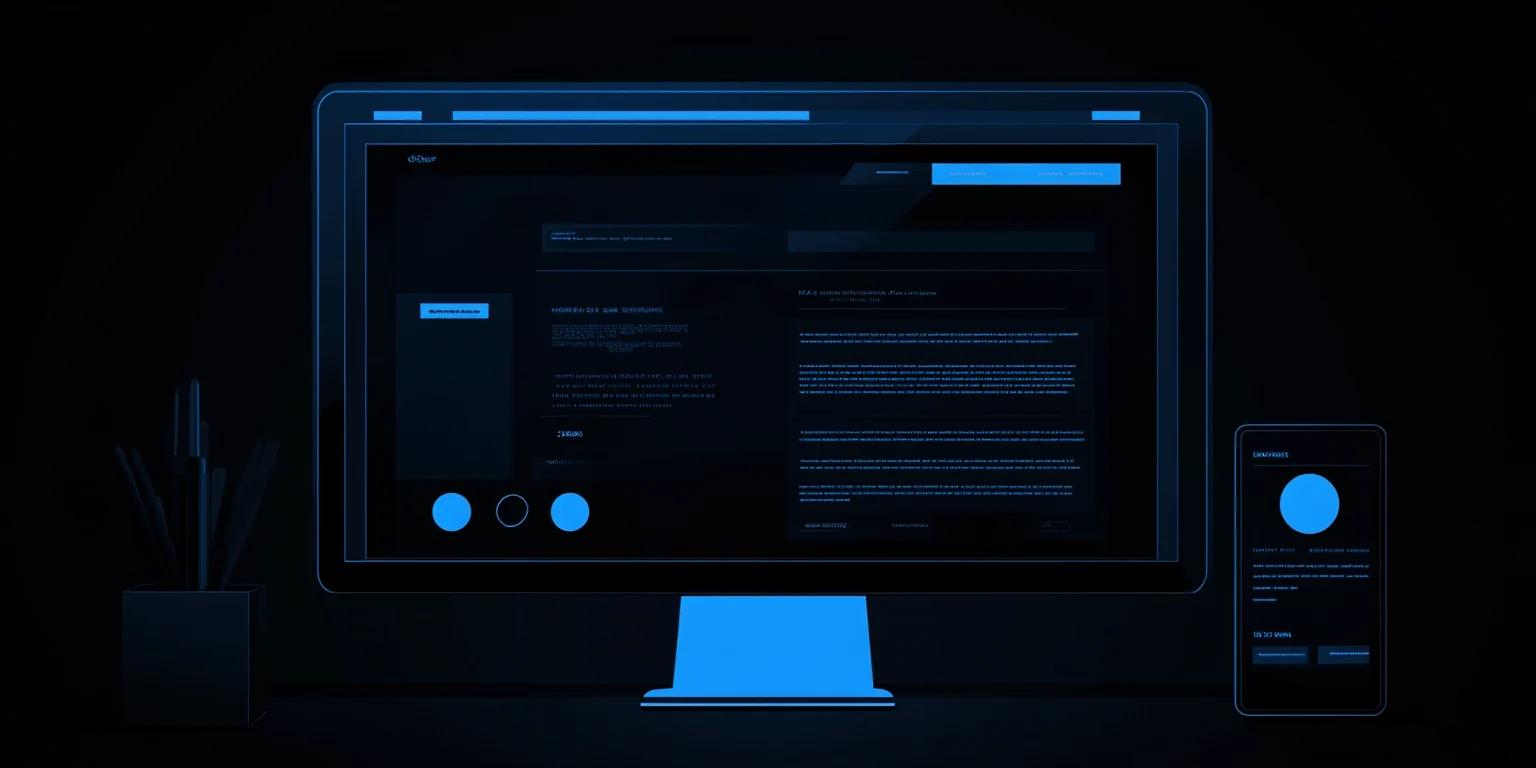Building a website in 2024 and wondering how much it will cost. The answer isn’t straightforward because it depends on several factors. Let’s break it down so you can get a clear picture.
First, consider the type of website you need. A small business site will cost less than a complex e-commerce platform. Next, think about the features and customizations you want. These will significantly impact the final price.
Website Development Cost in 2024
Building a website in 2024 can cost anywhere from $1,000 to over $300,000. The wide range is due to various factors such as the type of website, its size, the features you want, and the complexity involved. For instance, a basic informational website will cost significantly less than a full-scale e-commerce platform with hundreds of products.
Custom B2B website development and animations can also drive up costs. Integrations with third-party services, like payment gateways or CRM systems, add another layer of expense. The location and experience level of your developer also play a role. Developers in different regions charge different rates, and more experienced developers usually cost more.
Maintenance is another ongoing cost to consider. Websites need regular updates, security patches, and sometimes new features. If you’re running an e-commerce site, you’ll also need to manage inventory and process transactions, which adds to the overall expense.

What are the Types of Websites and Their Typical Costs?
Understanding the different types of websites and their associated costs can help you plan your budget more effectively.
Informational or Small Business Websites
Informational or small business websites usually consist of 8 to 16 pages. These sites are straightforward, providing essential information about your business, services, and contact details. They often include a homepage, about page, services or products page, blog, and contact page.
The cost of developing such a website ranges from $3,000 to $8,000. This price range covers basic design, standard functionalities, and some customization to match your brand’s look and feel.
Corporate Websites
Corporate websites are more extensive, typically spanning 25 to 75 pages. These sites serve larger organizations and need to convey more detailed information about the company, its services, and its achievements. They often include multiple sections such as detailed service pages, case studies, client testimonials, team bios, and possibly an investor relations section.
When planning a redesign, it's essential to consider tips for a website redesign that focus on enhancing user experience and aligning with business goals. The development cost for a corporate website ranges from $10,000 to $16,000. This price includes custom design, advanced functionalities, and integration with various tools and platforms used by the business.
eCommerce Websites
eCommerce websites are designed to sell products online and can range from 100 to 1,000 products. These sites require robust functionalities such as product catalogs, shopping carts, payment gateways, and inventory management systems.
The cost to develop an eCommerce website ranges from $20,000 to $40,000. This range covers custom design, secure payment processing, user account management, and integration with shipping and inventory systems. Additional features like customer reviews, wish lists, and personalized recommendations can also be included.
Web Applications
Web applications are highly interactive websites that provide a specific service or functionality to users. These can range from simple tools to complex platforms with thousands of pages. Examples include project management tools, social media platforms, and online learning systems.
When considering enterprise website design, it's important to recognize that the cost of developing a web application varies widely, ranging from $15,000 to $75,000 or more, depending on the complexity and number of features. This price includes custom development, user authentication, data management, and integration with other software and services.
Developing a web application often requires a team of developers, designers, and project managers to ensure it meets user needs and performs well under various conditions.

7 Factors Impacting Website Development Cost
Several factors influence the cost of developing a website, and understanding these can help you manage your budget better.
1. Website Type and Complexity
The type and complexity of your website play a significant role in determining the cost. A simple informational site with a few pages will cost less than a complex eCommerce platform or a web application with multiple functionalities. The more features and pages you need, the higher the development cost.
2. Custom Design and Animations
Custom designs and animations can make your enterprise website development stand out but also add to the cost. If you want a unique look and feel, expect to pay more for custom graphics, interactive elements, and animations. These require additional time and expertise from designers and developers.
3. Content Creation and Copywriting
Creating high-quality content and copywriting is another factor that impacts the cost. Professional content writers charge for their services, and the amount of content you need will affect the overall price. Good content is essential for engaging visitors and improving SEO.
4. Developer Location and Experience Level
The location and experience level of your developer also influences the cost. Developers in different regions charge different rates, and more experienced developers usually cost more. However, experienced developers can often complete projects more efficiently, potentially saving you money in the long run.
5. Ongoing Maintenance and Support
Websites require ongoing maintenance and support to stay functional and secure. Regular updates, security patches, and new features add to the overall cost. Budgeting for ongoing maintenance ensures your website remains up-to-date and performs well.
7. Marketing and SEO Optimization
Marketing and SEO optimization are crucial for driving traffic to your website. Investing in SEO services, social media marketing, and other promotional activities can increase your website's visibility and attract more visitors. These services come at an additional cost but can provide a good return on investment.
Steps to Estimate Website Development Costs
Estimating the cost of developing a website involves several steps. Here’s how to get a clearer picture of what you might spend.
Determine Website Type and Features
To build a scalable website, start by identifying the type of website you need. Are you looking for a simple informational site, a corporate site, an eCommerce platform, or a web application? List the features you want, such as contact forms, blogs, product catalogs, or user accounts. Knowing the type and features helps you get accurate quotes from developers.
Consider Design Complexity
Think about how unique you want your website to look. Custom designs and animations can make your site stand out but will increase costs. Decide if you need a fully custom design or if a pre-built theme with some customization will suffice. The more complex the design, the higher the cost.
Factor In Content Creation and Copywriting
High-quality content is key to engaging visitors. If you need professional content creation and copywriting, include this in your budget. The amount of content and the expertise of the writers will affect the cost. Plan for blog posts, product descriptions, and any other text you need.
Account for E-Commerce Setup
If you plan to sell products online, you’ll need an eCommerce setup. This includes product listings, shopping carts, payment gateways, and inventory management. Additionally, consider any third-party integrations like CRM systems, email marketing tools, or social media platforms, as these can enhance your B2B website strategy. While they add valuable functionality, they also increase the overall cost.
Research Developer Rates
Developer rates vary widely based on location and experience. Developers in different regions charge different rates, and more experienced developers usually cost more. Research and compare rates to find a developer who fits your budget and meets your quality expectations.
Budget For Ongoing Maintenance
Websites require ongoing maintenance to stay functional and secure. Plan for regular updates, security patches, and new features. Include the cost of support services to handle any issues that arise. This ensures your website remains up-to-date and performs well. To ensure longevity, consider how to future-proof your website.
Don't Forget Marketing and SEO Costs
Marketing and SEO are important for driving traffic to your website. Budget for SEO services to optimize your site for search engines. Consider the cost of social media marketing, email campaigns, and other promotional activities. These efforts help attract visitors and improve your site’s visibility.
Key Factors Influencing Website Maintenance Costs
Once your website is up and running, there are ongoing costs to keep it functional and secure. Here is a proper breakdown of the maintenance costs of your website:
Hosting and Domain Renewal
Hosting keeps your website accessible online, with costs varying from shared to dedicated servers. Domain renewal ensures you keep your website's address, typically ranging from $10 to $50 per year.
Content Updates and Additions
Regularly updating website content is essential for engagement. Costs depend on whether updates are done in-house or outsourced, often charging per piece or through a retainer.
Plugin and Software Updates
Regular updates for plugins and software maintain compatibility and security. Costs can differ based on the platform used; many updates may be included in premium subscriptions.
Backup and Recovery Services
Regular backups protect your website data from loss or corruption. Many hosting providers offer backup services, with costs ranging from a few dollars a month to more for comprehensive solutions.
Analytics and Performance Monitoring
Monitoring your website's performance helps optimize user experience. Costs vary from free basic analytics tools to subscription-based advanced features, depending on your needs.
E-commerce and Inventory Management
For e-commerce sites, managing inventory and transactions is ongoing. Costs depend on the platform used, including payment processing and advanced inventory management features.
Things to Do When Choosing the Web Development Partner
Choosing the right web development partner is crucial to the success of your project. Here’s what to consider.
Look for Experience in Your Industry
Prioritize web development partners with experience in your specific industry and project type. This ensures they understand your market and unique challenges, allowing them to offer tailored insights and solutions.
Review Portfolio and Case Studies
Examine potential partners' portfolios and case studies to gauge their capabilities and work quality. Look for projects similar to yours and assess design, functionality, and user experience. Strong portfolios and positive client testimonials indicate a developer's reliability and performance.
Evaluate the Technology Stack
Assess the technology stack and development process used by the partner. Ensure they are proficient in the latest technologies and frameworks relevant to your project, as a modern tech stack ensures better performance, security, and scalability.
Discuss Maintenance and Support Options
Inquire about ongoing maintenance and support options. Make sure you know if you want a website refresh vs redesign. Ensure the partner provides regular updates, security patches, and technical support to address any issues that may arise after the website goes live.
Compare Pricing and Value for Investment
Compare pricing among different web development partners, but consider overall value rather than just cost. Evaluate the quality of work, expertise, and support services to ensure that a higher initial investment may lead to better long-term results.

4 Ways to Reduce Website Development Costs
Managing costs effectively is key to a successful web development project. Here are some strategies to consider.
Start With An MVP or Phased Approach
Begin with a Minimum Viable Product (MVP) or a phased approach to manage costs effectively. An MVP allows you to launch a basic version of your website with core features. This helps you test the market and gather user feedback before investing in additional functionalities. A phased approach lets you add features and improvements over time, spreading out the costs and reducing the initial financial burden.
Use Pre-Built Themes Or Templates
Opt for pre-built themes or templates instead of custom designs. Many platforms offer a wide range of high-quality, customizable templates that can fit various industries and purposes. Using these templates can save you time and money while still providing a professional look. Customizing a pre-built theme is generally faster and less expensive than creating a design from scratch.
Limit Custom Design and Animations
Custom designs and animations can significantly increase development costs. To keep expenses down, limit the use of custom graphics and interactive elements. Focus on a clean, functional design that meets your needs without unnecessary embellishments. Simple, user-friendly designs often perform better and are easier to maintain.
Optimize Content and Images
Optimizing your content and images can improve website performance and reduce costs. Use compressed images to decrease load times and enhance user experience. Well-structured, concise content can make your website more effective and easier to manage. Additionally, optimized content can improve your site's search engine ranking, attracting more visitors without extra marketing expenses.
Closing Thoughts
Incorporate SEO website best practices during the development phase to avoid costly changes later. Use clean code, optimize meta tags, and ensure your site is mobile-friendly. Good SEO practices can improve your site's visibility in search engines, driving organic traffic and reducing the need for paid advertising.
Ready to see the Webstacks difference? Schedule a brief discovery call today and let us help you build a scalable, beautiful, and cutting-edge website. Visit Webstacks to get started.




